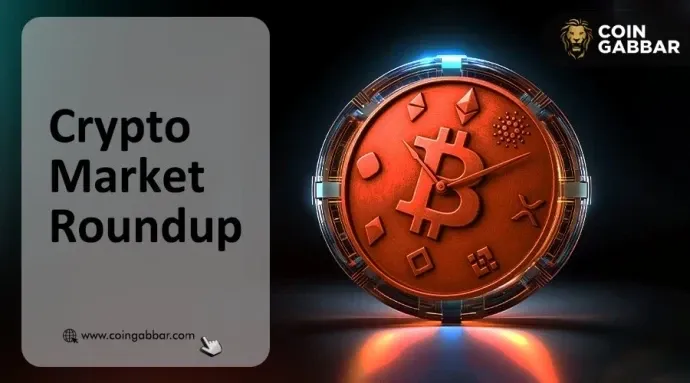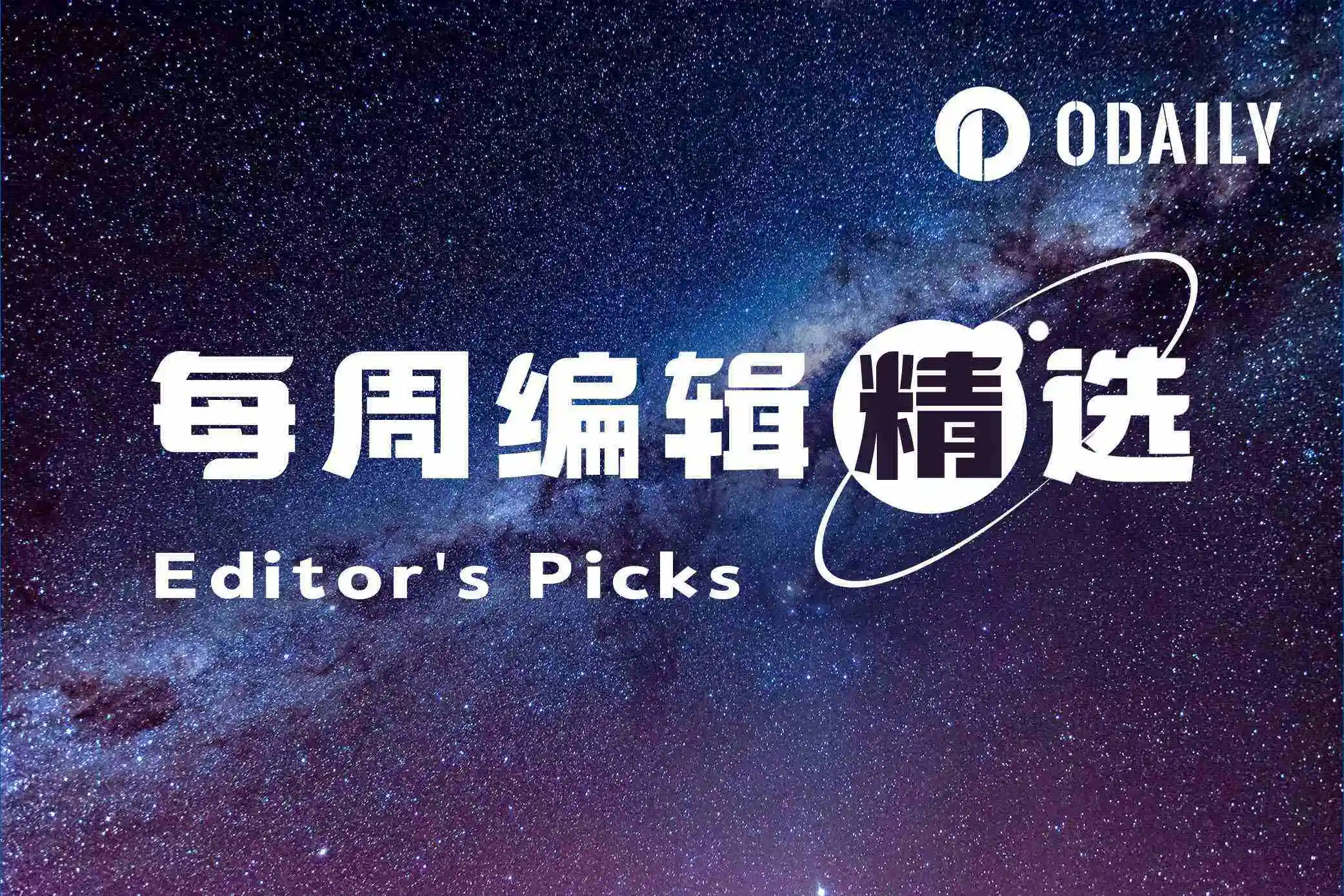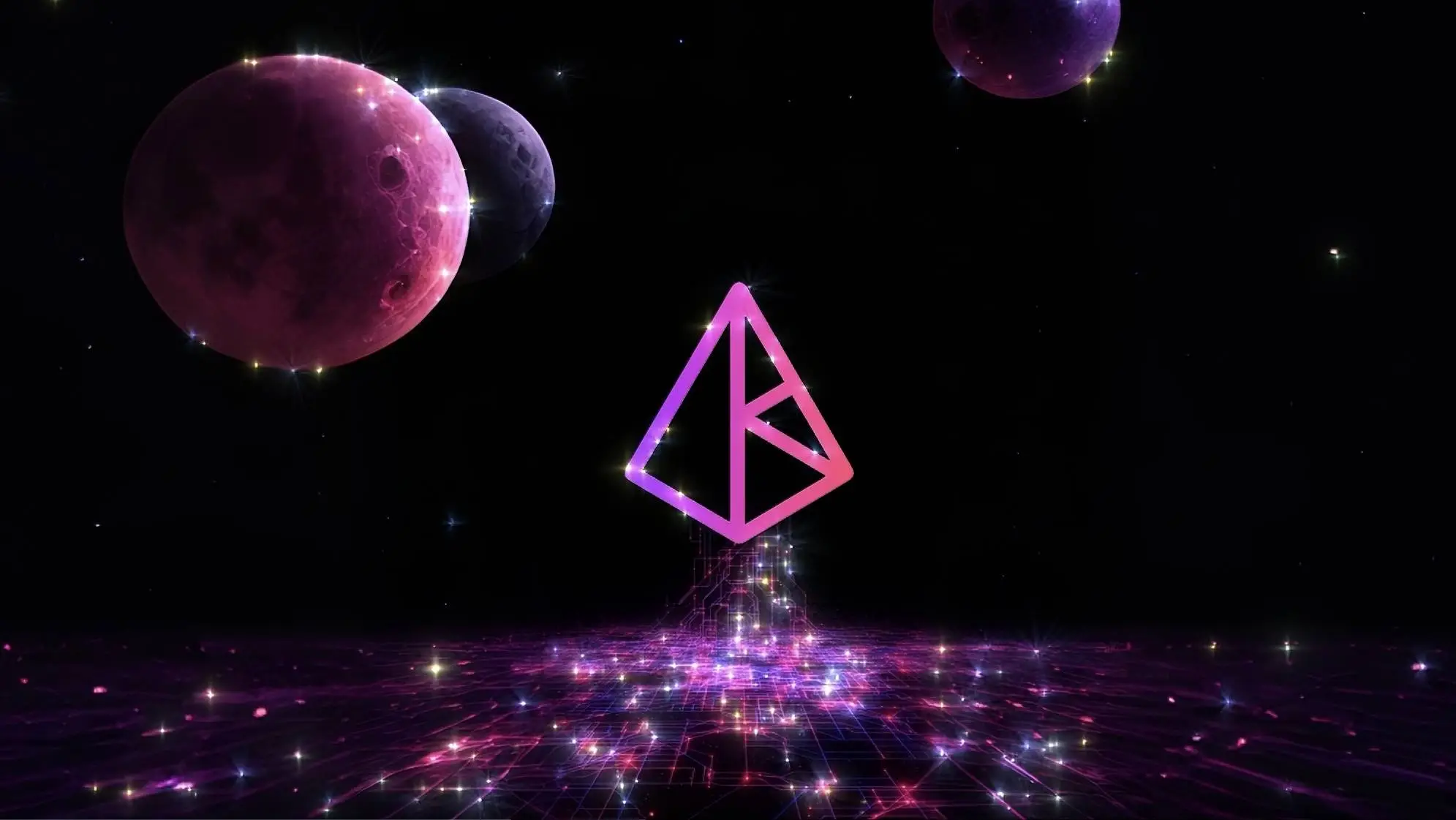1. Project Highlights
1. Project Advantages
1.1 Strong enterprise background support: With the backing of Coinbase, Base has abundant user resources and financial support. Additionally, Base can easily build decentralized applications that can access Coinbase products, users, and tools, seamlessly integrating with Coinbase's product suite.
1.2 Integration into the Superchain ecosystem: As a user of the OP Stack, Base can seamlessly connect with all projects that have adopted this technology stack, while also enjoying the ecosystem support of other OP Stack projects, thereby enhancing the prosperity of the Base chain's ecosystem.
1.3 Excellent business performance: Despite being in a relatively early stage, Base officially launched its mainnet on August 9, 2023. However, its business data far exceeds that of Linea, which had already launched on July 18, 2023. Its TVL even surpassed Starknet to become the fifth in the Layer2 TVL rankings, indicating that Base is more popular in the market.
1.4 High community enthusiasm: With users being able to enter the Base chain early through token contracts, a huge wealth effect occurred in the Base chain. The emergence of the thousandfold coin "$BALD" sparked a craze in the Base chain, attracting the attention of many community members.
2. Potential Risks
2.1 Lack of core competitive advantage in technology: The emergence of Base does not seem to bring significant importance. It appears to be just one of many members in the Layer2 projects, despite its strong backing, which is not enough to make it stand out. Furthermore, Base's impact on the entire industry and field is minimal. (What aspect of core competitive advantage is this referring to? Is it technology?)
2.2 Regulatory pressure leading to uncertain prospects for token issuance: In the current unclear regulatory environment, it is difficult for Base to launch its token, and the mainnet release roadmap clearly indicates that there are currently no plans to issue tokens. Compared to other Layer2 projects expected to conduct token airdrops, Base has lower attractiveness to airdrop hunters.
However, its official whitepaper also explicitly mentions: "Subsequent steps will gradually decentralize." In the decentralization process of web3, common implementation methods include issuing tokens and establishing decentralized autonomous organizations (DAO). In the past, many projects have claimed that they would not issue tokens, but later distributed tokens and conducted airdrops to users. Therefore, another perspective believes that as a public chain, Base is highly likely to issue governance tokens.
2. Project Overview
1. Project Introduction
Base is an Ethereum Layer2 incubated by Coinbase and built on the OP Stack. Base will return a portion of the transaction fees to the Optimism Collective treasury. The goal of Base is to bring the next billion users into the crypto world.
As shown in the image above, the company's founder Brian Armstrong outlined a master plan for the growth of cryptocurrencies in four stages. These include:
- Developing new protocols such as Bitcoin, Ethereum, etc. (completed) - 1 million people
- Establishing exchanges to facilitate trading (completed) - 10 million people
- Building a mass market interface for dApps (completed) - 100 million people
- Building dApps to power an open financial system - 1 billion people
The last step is hoped to be achieved through Base. The Coinbase team sees Base as the next step in achieving the mission of enhancing global economic freedom. Base will serve as the location for Coinbase's on-chain products and provide an open ecosystem for anyone building Ethereum scaling solutions and dApps. The Coinbase team hopes Base will become a seamless gateway for Coinbase users to access a wider crypto economy, ultimately making it easier for more people to access web3.
Base is a branch of the OP codebase. The Base team chose Optimism because the EVM provides the "path of least resistance," and the OP codebase provides a fast launch path.
The Coinbase and Optimism teams have been collaborating for over a year, making significant contributions to the development of EIP-4844 (also known as Proto-Danksharding, which will reduce L2 transaction fees by 10-100 times). Coinbase is now a core contributor to the OP Stack, joining as the second core project team.
2. Project Team
Base is incubated internally by Coinbase, one of the world's largest cryptocurrency exchanges, founded by former Airbnb engineer Brian Armstrong in June 2012.
As of today, Coinbase has over 245,000 ecosystem partners in over 100 countries/regions who trust Coinbase to securely invest, spend, save, earn, and use cryptocurrencies. As shown in the image above, Coinbase's platform assets amount to $128 billion, with a quarterly trading volume of $92 billion, and the company has over 3,400 employees.
It is worth mentioning that Coinbase completed a $3 billion Series E financing at an $8 billion valuation on October 30, 2018, and went public on the Nasdaq on April 14, 2021, with the stock code "COIN," currently valued at $20.65 billion.
3. Project Financing Situation
Currently, Base has not conducted independent fundraising activities, but its parent company Coinbase has successfully raised $505.6 million. Given that Coinbase, as one of the largest centralized exchanges, has accumulated substantial financial resources and cash flow, and Base has been assigned an important role in the "master plan" of Coinbase's fourth stage, it is highly probable that Base will receive funding support from Coinbase and will not face funding shortages.
4. Project Progress and Roadmap
Base launched the Base testnet on February 23, 2023, offered a $15,000 bounty for infrastructure developers at ETHDenver on March 4, 2023, and then announced the preparations needed before the mainnet launch on May 24, 2023 (all preparations have been completed):
- Successfully completed the Regolith hard fork in the testnet
- Successfully conducted infrastructure review with the OP Labs team
- Successful upgrade of Optimism's Bedrock
- Completed internal and external audits without major issues
- Demonstrated the stability of the testnet
After meeting the above launch criteria, on July 13, 2023, the official announcement was made that the Base mainnet is now open to builders, allowing developers to deploy their products on Base in the first phase of the mainnet.
Subsequently, on August 3, Base announced that the mainnet would be officially open to all users on August 9, 2023, and Base also held an event called "OnChain Summer," a month-long online event hosted by 50 of the best builders, brands, products, artists, and creators. Each day in August, users will be treated to various online activities, including:
- Onchain Summer – August 9 to 18: Creating art, websites, or anything inspired by Onchain Summer on Base.
- Build on Base – August 12 to 23: Deploying protocols, building infrastructure, or new applications on Base.
- Support Crypto – August 14 to 24: Creating a one-minute video sharing stories about on-chain use cases or advocating for reasonable legislation.
- Based Accounts – August 16 to September 13: Building something using account abstraction that unlocks new or improved user experiences on Base.
In addition to the sponsorship, Base also collaborated with other Superchain (OP Stack) members to host the virtual hackathon "Superhack" from August 4 to 18, with a prize pool of $125,000.
3. Competitor Analysis
1. Funding Situation:
In terms of fundraising, Base has not conducted independent project financing, but as shown in the image below, its parent company Coinbase has raised a total of $505.6 million, indicating ample funding.
4. Base's Own Highlights and OP Stack Analysis
1. Backed by Coinbase
1.1 Financial and Resource Support
Coinbase has over 100 million verified users and nearly a billion dollars in assets. As mentioned earlier, Coinbase is one of the top 5 cryptocurrency exchanges, with strong user resources and substantial funding. Therefore, Base, backed by Coinbase, can receive financial and resource support.
1.2 Seamless Integration with Coinbase's Products:
Coinbase has systematically eliminated barriers for retail users migrating from centralized finance (CeFi) to decentralized finance (DeFi).
- Coinbase Wallet is one of the most integrated wallets in the DeFi space, with over 1 million desktop users and over 10 million mobile users.
- Coinbase collaborates closely with Circle to expand the market value of USDC stablecoin to over $25 billion.
- Coinbase's Liquid staking token cbETH is the second-highest staking entity after Lido, with 2.33 million ETH staked on Coinbase, ensuring the stability of the Beacon chain.
In addition, Base can easily build decentralized applications that can access Coinbase products, users, and tools, seamlessly integrating with Coinbase's product suite. Just like how Linea's mainnet is automatically integrated into Metamask, Base's mainnet is also automatically integrated into the Coinbase Wallet, allowing users to use the Coinbase Wallet without the need for manual addition.
Furthermore, Coinbase is not just an exchange; its product line includes digital asset staking solutions, liquidity staking derivatives, institutional custody solutions, non-custodial wallet products, and in-app integration for DeFi accessibility. Base is a natural extension of this product line, providing a direct way for Coinbase users to enter the Web3 world.
1.3 Financial Security Support:
At the current stage, the cryptocurrency market is relatively limited in size, so many large investors and institutions may be hesitant to invest a large amount of funds in the cryptocurrency space. They may also have reservations about holding assets on the blockchain for investment.
However, it is worth noting that Base relies on Coinbase, a company that is listed on the Nasdaq. As a mature market participant, Coinbase has reliability in fiat gateways and is subject to stricter regulation. This makes Coinbase more trustworthy in terms of financial security and may be more attractive to some institutional investors.
2. OP Stack
As mentioned at the beginning of the article, Base is built on the OP Stack, an Ethereum Layer2, and Base will return a portion of the transaction fees to the Optimism Collective treasury. So, what is OP Stack, and what benefits does it bring to Base?
2.1 What is Optimism Collective
According to official introductions, the Optimism Collective is composed of communities, companies, and citizens, and is jointly governed by Citizens' House and Token House. It aims to avoid governance pitfalls that occur in other governance models on Ethereum. The two groups' mission is to balance short-term incentives with the project's long-term vision. The purpose of the Optimism Collective is to produce strong public product infrastructure for OP, increase L2 utility, and create an efficient and complete crypto-economic foundation.
2.2 What is OP Stack
According to official introductions, OP Stack is a standardized, shared, and open-source development stack that supports Optimism and is maintained by the Optimism Collective. OP Stack consists of many different software components managed and maintained by the Optimism Collective, collectively forming the backbone of Optimism. OP Stack is built as a public product for the Ethereum and Optimism ecosystems.
In the second half of 2022, the Optimism team is breaking down their original development work into multiple modular levels (Data Availability Layer, Derivation Layer, Execution Layer, and Settlement Layer) and developing OP Stack. In short, OP Stack is a standardized open-source module developed by Optimism, which can be assembled into a custom chain. Any developer can innovate a new chain based on OP Stack.
This completes the translation of the provided markdown. If you have any further requests or need additional assistance, feel free to ask!
3. Other Projects Using OP Stack
3.1 Worldcoin
In May of this year, the Worldcoin Foundation and Tools for Humanity (TFH) early protocol contributors announced their support for the Optimism Collective to jointly build a scalable blockchain ecosystem based on OP Stack.
As the first step in joining the Optimism Collective, the decentralized privacy identity protocol World ID under Worldcoin will be launched on the OP mainnet, and the native wallet World App will subsequently migrate to the OP mainnet.
In fact, as early as 2020, Worldcoin independently developed and launched a simple payment Optimistic Rollup application chain called Hubble, and released a test version of the World App. However, the team found that the test results were not ideal, as user demand exceeded the capabilities of Hubble, leading to its migration to Polygon PoS.
Now, Worldcoin is rebuilding the application chain using OP Stack. This collaboration will focus on building an on-chain identity system. For Optimism, an on-chain decentralized identity system is crucial for achieving its economic self-growth, unlocking democratic governance and innovation, and allowing individuals to better control their finances and participate in the global economy in their own way. To achieve this, Optimism has deployed the identity primitive AttestationStation, an experimental identity system that allows anyone to provide arbitrary attestations for other addresses, assigning a trust score to a specific on-chain address to measure its real social relationships (influence).
For Worldcoin, an identity system is equally important, as it aims to distribute digital currency to the global population of 7.9 billion people for free and ensure fair wealth distribution. This requires a method to verify user identities and prevent individuals from claiming tokens multiple times under different identities. To address this, the team developed World ID as the underlying identity protocol for Worldcoin, ensuring that each person can only register one account using their iris. Additionally, the team developed a biometric device to verify a person's uniqueness through iris scanning, while ensuring the privacy of the verified individual through zero-knowledge proofs.
As of July 13, 2023, during the testing phase, the number of registrations for World ID exceeded 2 million.
Furthermore, on August 6, 2023, it was officially announced that the number of verified World ID holders had increased, and the World App from Tools for Humanity (the first wallet built for the Worldcoin network) experienced a significant increase in global activity after its launch. Within 7 days of its release, the weekly active users of the World App increased by 3 times, and the number of accounts created per week increased by more than 10 times.
3.2 BNB Chain Application Chain opBNB
In addition to Ethereum, other public chains can also use OP Stack to implement their own "Layer2" scaling solutions, such as the second-layer application chain opBNB built on OP Stack for BNB Chain.
On June 19, BNB Chain launched a Layer 2 testnet based on Optimism OP Stack (expected to launch the mainnet in Q3 2023). By adopting OP Stack Rollup, opBNB can move computation and state storage off-chain, relieving congestion and reducing transaction costs.
opBNB can further improve processing speed, with performance surpassing that of BNB Chain. According to official descriptions, opBNB has a block time of 1 second, transfer gas fees as low as $0.005, and a transaction processing speed (TPS) of over 4000 per second. In comparison, the current BNB Smart Chain Layer 1 processes 2,000 transactions per second, with an average cost of approximately $0.109 per transaction. The speed of opBNB is almost twice that of the BNB Chain mainnet, and the cost is significantly reduced.
opBNB is a second-layer network (Layer2) built on BSC using OP Stack. Similar to Optimism Rollup, opBNB processes transaction data off-chain and then submits it to Layer1 to improve network performance, ultimately achieving high TPS, low gas fees, and security consistent with Layer1.
So, why does opBNB choose to build its own application chain using OP Stack?
In fact, L2 is not unique to Ethereum. With the surge in transaction volume, such as in GameFi, even a high-performance public chain like BNB Chain faces network congestion and high gas fees. The original design and architecture are no longer able to meet the new scalability requirements, leading to the emergence of opBNB.
As early as September of last year, BNB Chain launched the zkBNB testnet (a Layer 2 network using zero-knowledge proofs). However, because zkBNB is not compatible with EVM (incompatibility with EVM means it cannot interact with applications on Ethereum), BNB Chain developed a new Layer 2 solution, "opBNB."
opBNB introduces improved data availability, batch transactions, and a gas limit of up to 100M for the BNB Chain ecosystem. Additionally, the EVM-compatible OP Stack can simplify the process of migrating Ethereum Virtual Machine (EVM) code from Ethereum to BNB Chain, allowing developers to create open ecosystems more quickly and easily, thereby expanding the user base.
Unlike Optimism and Coinbase's L2 scaling solution Base, opBNB is built on BSC (not Ethereum). BSC itself is superior to Ethereum in terms of speed, and opBNB will further enhance performance, surpassing not only BSC but potentially also other scaling solutions such as Optimism in terms of speed.
Most importantly, the strategic significance of BNB Chain adopting OP Stack to build a second-layer application chain is that, for the public chain BNB Chain, the application chain built using OP Stack can still use BNB as the gas fee payment token. This means that as more use cases emerge in the future, BNB's application scenarios can be greatly expanded, and these benefits can be captured by BNB. In the long run, BNB Chain may even become a strong competitor to Ethereum's continuously evolving L2 ecosystem.
3.3 Zora Network
Zora Network has issued a second-layer NFT minting platform based on OP Stack, targeting NFT creators, brands, and collectors, providing a range of NFT creator tools, and reducing minting costs to below $3.
3. Other Projects Using OP Stack
3.1 Worldcoin
Focused on providing the best user experience for creators and collectors, Zora will offer a faster, lower-cost, and improved on-chain experience. As Zora Engineering tweeted, "An interesting fact is that the combined cost of 'bridging to L2' + 'minting' is less than the cost of a single mint on the mainnet."
Zora Network will seamlessly integrate with the existing infrastructure of the Zora marketplace. This means that the platform's current users, including artists, brands, and collectors, will seamlessly join the new Layer 2 network, including 35 Web3 project entities such as the music NFT platform Sound.XYZ, the wallet app Rainbow Wallet, the Web 3.0 innovation incubator Seed Club, PleasrDAO, and the existing 130,000 users. To commemorate this release, Zora has issued an open edition NFT called "Energy," which fans can mint in the next 10 days.
Furthermore, data shows that since its launch on the 21st, Zora Network has surpassed 164k bridged addresses and has a TVL of 1706 ETH, equivalent to approximately $3.1 million.
Additionally, Zora is currently deployed on Base.
3.2 Magi Rollup Client by a16z
Magi is a second-layer Rollup client solution launched by a16z Crypto in April of this year. It is written in Rust and built on OP Stack, serving as a consensus client in traditional Ethereum execution/consensus splits, providing new blocks to the execution client to advance on-chain transactions. Magi's execution shares the same core functionality as the reference implementation (op-node) and works with execution nodes (such as op-geth) to sync to any OP Stack chain.
The goal of Magi is to be a standalone developed direct replacement for op-node, enhancing the diversity of Rollup clients. A16z aims to build a new Rust-based client to encourage a more secure and active OP Stack and bring more contributors to the ecosystem.
As one of the most prominent investors in the crypto space, a16z has over $7.6 billion dedicated to investments in the field (as of May last year). As an investor in the Ethereum scaling project Optimism, a16z Crypto's leadership in developing the Magi client on OP Stack marks its first step into the Optimism Collective as both an investor and a developer.
3.3 On-Chain Games
OPCraft, Keystone, and Loot are on-chain games that often require high-speed and low-cost interactions, leading to the need for customized blockchain infrastructure. Many scaling solutions have been introduced for on-chain games, with OP Stack being one of the most popular infrastructures for on-chain games. One of the most representative on-chain game experiments, OPCraft, is built on OP Stack.
OPCraft is an on-chain virtual world, a fully voxel-based game built entirely on-chain using OP Stack. It is an autonomous world where every aspect, including rivers, grass, and snow on mountaintops, exists on-chain, and every action in the world occurs as an Ethereum transaction.
Keystone is another chain built using OP Stack, incorporating game ticks and ECS into the chain using custom precompiles to increase on-chain game speed by 100 times and provide a more powerful gaming experience.
Additionally, the Loot ecosystem project Adventure Gold DAO recently announced the adoption of OP Stack to build Loot Chain, a new Ethereum L2 network dedicated to the Loot community, to reduce gas fees and use its native token AGLD as a gas token. The chain also uses Polygon as a data availability layer, significantly reducing the construction, deployment, and operation costs of Loot Chain.
3.4 DeBank Chain
On August 11, 2023, the all-in-one wallet DeBank announced the launch of DeBank Chain, based on OP Stack. The testnet is now live, and the mainnet is scheduled to launch next year. DeBank Chain aims to be a social asset layer, integrating a system similar to Account Abstraction at the chain level, providing users with a near-Web2 experience while remaining 100% compatible with the current EVM standard. The new account system supports dedicated L2 private key signature transactions, reducing the use of L1 private keys in social scenarios and enhancing the security of users' L1 assets.
5. Ecosystem Development
1. Base Ecosystem Fund
Coinbase announced the establishment of the Base Ecosystem Fund on February 23, along with the launch of Base. This fund is a pool of funds for early projects based on the Base network, combined with specialized support from the Base team to help projects succeed.
The Base Ecosystem Fund provides four suggestions for ecosystem builders (excerpt from Base):
Flatcoins: Base is interested in decentralized stablecoins designed to track inflation rates, providing users with stable purchasing power while also being resilient to economic uncertainty caused by the financial system.
On-Chain Reputation Platform: Base believes that decentralized identity and reputation will play a crucial role in defining everyone's on-chain role. By supporting native on-chain entity reputation protocols, there is an opportunity to create more trust on-chain.
On-Chain Limit Order Book (LOB) Trading Platform: Base believes that LOB still has a place, especially for professional traders and institutions, despite the usefulness of existing exchange products such as AMMs.
Safer DeFi: Base believes that better tools are needed to keep up with DeFi ecosystem innovation while ensuring the security of funds.
2. Ecosystem Projects
Since the launch of Base mainnet, it has received widespread response from the developer community, with over 150 projects deployed on Base. These projects include DeFi, social, gaming, NFT, infrastructure, developer tools, wallets, security, oracles, and more. This article will categorically select some of the more representative projects for introduction.
2.1 DeFi
The Base ecosystem has a well-established DeFi sector, including established projects such as Uniswap, iZUMi, and SushiSwap, as well as emerging native projects like the leading TVL DEX Baseswap and Pira Finance, which has launched the stablecoin aUSD.
iZUMi Finance: iZUMi Finance is a liquidity optimization protocol built on the Ethereum network, providing "programmable liquidity-as-a-service" based on Uniswap V3 for blockchain projects.
BaseSwap: BaseSwap is the native DEX on Base, with a TVL of $52.34M as of today (8.14), ranking first in the Base chain TVL leaderboard.
2.2 Bridge
- Orbiter
3.2 Bridge
Orbiter Finance is a decentralized cross-rollup bridge for transferring Ethereum native assets, providing low-cost and near-instant transfers as a Layer 2 infrastructure. It supports over 10 Rollup networks, including zkSync, StarkNet, Polygon, Arbitrum, Arbitrum Nova, Optimism, Base, Linea, and more, catering to the cross-chain needs of almost all Optimistic Rollups and Zk Rollup networks. Orbiter Finance completed a $3.2 million seed round at a $40 million valuation on November 29, 2022, with investments from Tiger Global, Matrixport, Starkware, Cobo Ventures, GGV, Mask Network, Zonff Partners, and others.
Axelar Network is a universal interoperability network that securely connects all blockchain ecosystems, applications, assets, and users to provide Web3 interoperability. It completed a $35 million Series B funding round at a $1 billion valuation on February 15, 2022, bringing its total funding to over $73 million.
2.3 GameFi
Parallel is a sci-fi NFT trading card game based on the Ethereum chain, allowing players to buy and collect cards to build decks and earn rewards. It received a $50 million investment from Paradigm at a $5 billion valuation on October 22, 2021.
Iskra is a blockchain game center that allows players to explore and enjoy high-quality blockchain games, create their own communities, and participate in new game projects through its Launchpad.
2.4 DeSocial
Farcaster is a decentralized protocol that enables developers to build novel social networks, redefining identity, messaging, and social graphs while addressing user social ownership in terms of privacy, authenticity, portability, usability, and scalability.
CyberConnect is the first decentralized social graph protocol for Web3.0 social networks and metaverses, aiming to democratize social connections and provide users with ownership, portability, and composability of social graphs.
Base Name Service (BaseNS) is the ENS (Ethereum Name Service) on Base, which held a domain name airdrop event on GALXE on August 2, 2023.
2.5 NFT
OpenSea has integrated with the Base mainnet.
BakerySwap announced the launch of an AI-based NFT series called Punk X on the Base network in August.
mintfun is an NFT minting aggregation platform that has announced support for the Base network.
Coca-Cola issued a series of NFTs on the Base chain on August 14, 2023, combining world art with the iconic Coca-Cola bottle design.
2.6 Infra
Thirdweb is a UK-based Web3 software developer that offers free Web3 development tools and completed a $24 million strategic funding round at a $160 million valuation on August 25, 2022.
This summarizes the information provided in the document.
Base, like Linea, is backed by a powerful company with strong user resources and financial support, which has cleared many obstacles for Base's development. Currently, Base is still in the early stages, having officially launched its mainnet on August 9, 2023. However, its business data far exceeds that of Linea, which launched on July 18, 2023. Its TVL even surpasses Starknet, ranking fifth in the Layer2 TVL leaderboard, indicating that Base is highly welcomed in the market.
Furthermore, the early access for users to enter the Base chain by transferring coins to the contract has created a remarkable wealth effect, leading to the emergence of the "BALD" token, which has caused a frenzy around the Base chain and attracted a lot of community attention.
In this "BALD" token phenomenon, Base has gained significant attention, which may be attributed to the outstanding operational capabilities of the Coinbase team. They have been adept at capturing market sentiment before the mainnet launch, creating a high level of excitement for the Base chain. Additionally, this may also indicate the entry of some large investors.
Moreover, the recent launch of the Base mainnet has just taken place, and its impact and significance for the industry will gradually become apparent over time. Despite its strong background support and membership in the Superchain, it seems that this may not be enough for Base to stand out from the competition at the moment.
Therefore, to stand out among the many Layer2 projects, Coinbase needs to provide stronger and more effective support, and collaborate more closely with Optimism to jointly promote the development of OP Stack. At the same time, Base itself should actively innovate on the basis of OP Stack, creating more meaningful innovative achievements for the entire industry and field.
References:
[1] Optimistic? This article sorts out the projects using OP Stack
[2] Inventory of Layer 2 public chain Optimism's killer moves, what highlights can be expected from OP Stack and Bedrock updates?
[3] Detailed explanation of cross-chain communication protocol Axelar: How to unlock cross-chain composability and liquidity?
[4] Exploring OP Stack: Optimism's vision for modular expansion
[5] Optimistic? This article sorts out the projects using OP Stack
[6] The Superchain is coming: In-depth analysis of the OP Stack jointly created by Coinbase and Optimism
[7] Detailed testing gameplay and asset market value of three major games Bigtime, Illuvium, and Parallel
[8] Inventory of projects and opportunities worth paying attention to in the BASE chain ecosystem
Data Links:
[1] Arbitrum - Dune Analytics
[2] L2 - Dune Analytics
[3] Optimism-Ethereum - Dune Analytics
[4] zk-EVM Mega Dashboard - Dune Analytics
[5] Linea - Dune Analytics
[6] Linea Mainnet Dashboard - Dune Analytics
[7] ERA - Dune Analytics
[8] Starknet Overview - Dune Analytics
[9] Base Mainnet Dashboard - Dune Analytics
免责声明:本文章仅代表作者个人观点,不代表本平台的立场和观点。本文章仅供信息分享,不构成对任何人的任何投资建议。用户与作者之间的任何争议,与本平台无关。如网页中刊载的文章或图片涉及侵权,请提供相关的权利证明和身份证明发送邮件到support@aicoin.com,本平台相关工作人员将会进行核查。




